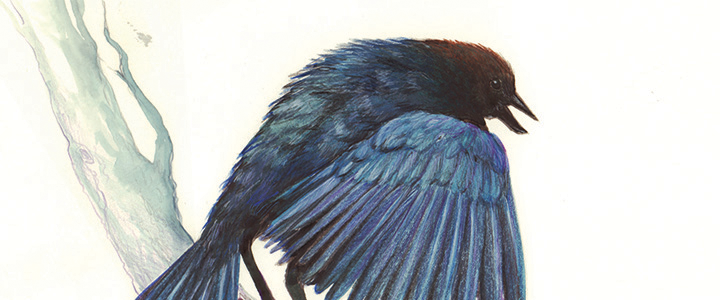Female’s sensory physiology affects her preference for different types of males
05-23-2018

There is an extensive literature on how females choose mates based on the properties of a male’s mating display. The general idea is that males advertise their quality through a signal (say the tail of a peacock), and that females use information decoded from those signals to decide which male to mate with. One potential problem with this scenario is that females likely differ in their sensory physiology, which in turn could impact how they decode information from the signal. Kelly Ronald did her PhD work in the labs of Esteban Fernandez-Juricic and Jeff Lucas covering this question. She studied both the auditory and visual physiology of female cowbirds, and correlated this physiology with preferences females showed for a variety of male displays. Male cowbirds have a mating display that combines movement and wingspread (a visual component) with a song (a vocal component). Kelly was able to show that the sensory configuration across both of these sensory modalities qualitatively impacted a female’s preference for specific signals. This complicates our understanding of female mate choice because the value of a signal to a male will depend on the sensory biology of the female to whom that signal is being displayed.
Ronald KL, E Fernandez-Juricic, JR Lucas. 2018. Mate choice in the eye and ear of the beholder? Female multimodal sensory configuration influences her preferences. Proceedings of the Royal Society B: 20180713